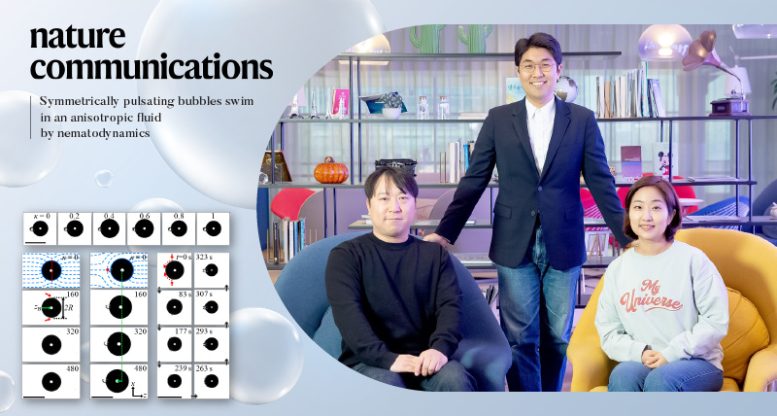

Researchers have discovered that objects can achieve directed motion within a liquid crystal by periodically changing their sizes, paving the way for advances in microrobotics.
A research group from the Ulsan National Institute of Science and Technology (UNIST), led by Professor Junwoo Jeong from the Department of Physics, recently discovered a pioneering principle of motion at the microscopic level. Their findings reveal that objects can achieve directed motion simply by periodically changing their sizes within a liquid crystalline medium. This innovative discovery holds great potential for many areas of research and could lead to the development of miniature robots in the future.
In their research, the team observed that air bubbles inside a liquid crystal can move in one direction by periodically changing their sizes, in contrast to the symmetrical growth or shrinkage typically seen in air bubbles in other media. By introducing air bubbles, similar in size to a human hair, into the liquid crystal and manipulating the pressure, the researchers were able to demonstrate this unusual phenomenon.

From left: Sung-Joo Kim, Professor Junwoo Jeong, and Research Professor Eugene Ohm. Credit: Unest
The key to this phenomenon lies in the creation of phase defects within the liquid crystal structure next to air bubbles. These defects disrupt the symmetrical nature of the bubbles, enabling them to experience a unidirectional force despite their symmetrical shape. As air bubbles fluctuate in volume, pushing and pulling the liquid crystal surrounding them, they are pushed in a fixed direction, defying the laws of conventional physics.
“This pioneering observation demonstrates the ability of symmetrical objects to exhibit directed motion through symmetrical movements, an unprecedented phenomenon,” said Sung-Ju Kim, first author of the study. It also highlighted the potential for this principle to be applied to a wide range of complex liquids other than liquid crystals.

Scattered pulsating bubbles in NLC. Credit: Unest
Professor Jeong commented: “This interesting result underscores the importance of breaking symmetry in time and space in driving locomotion at the microscopic level. Moreover, it bodes well for promoting research in the development of microscopic robots.”
Reference: “Pulsating bubbles float symmetrically in an anisotropic fluid by nematic dynamics” by Sung-Joo Kim, Zija Kuss, Eugene Ohm, and Jun-Woo Jeong, February 9, 2024, Nature Communications.
doi: 10.1038/s41467-024-45597-1
This research was supported by the National Research Foundation of Korea (NRF), the Institute of Basic Sciences (IBS), and the Slovenian Research Agency (ARRS).

“Web maven. Infuriatingly humble beer geek. Bacon fanatic. Typical creator. Music expert.”





More Stories
Scientists confirm that monkeys do not have time to write Shakespeare: ScienceAlert
SpaceX launches 23 Starlink satellites from Florida (video and photos)
A new 3D map reveals strange, glowing filaments surrounding the supernova